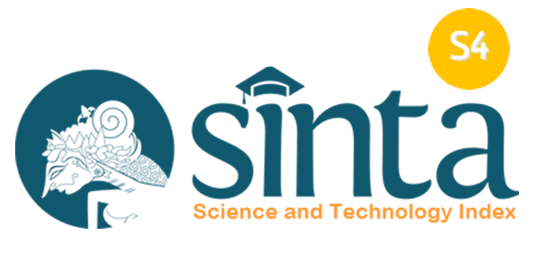Model Konseling Rehabilitasi bagi Individu Tunanetra Dewasa
Abstract
Dengan exploratory mixed methods research design, penelitian ini mengembangkan model konseling rehabilitasi bagi orang dewasa yang baru mengalami ketunanetraan untuk membantunya mengatasi masalah-masalah psikososial yang diakibatkan oleh ketunanetraan. Konstruk model dikembangkan dari data hasil studi kasus terhadap enam orang yang ketunanetraannya terjadi pada usia dewasa dan telah terbukti berhasil dalam kehidupannya. Konstruk model tersebut memuat lima unsur yang saling terkait yaitu: (1) keyakinan filosofis tentang ketunanetraan dan konseling rehabilitasi, (2) tujuan konseling, (3) pendekatan konseling, (4) metode konseling, dan (5) tahap-tahap konseling. Model divalidasi dengan expert judgment dan diujicobakan dengan desain single-subject research pada dua orang klien yang relatif baru mengalami ketunanetraan.
Kata Kunci: konseling rehabilitasi, tunanetra dewasaKeywords
Full Text:
PDFReferences
Bellini, J. L. & Rumrill, P. D., Jr. (1999). Research in Rehabilitation Counseling. Springfield, Illinois: Charles C Thomas Publisher, Ltd.
Ben-Zur, H. & Debi, Z. (2005). "Optimism, Social Comparisons, and Coping with Vision Loss in Israel". Journal of Visual Impairment and Blindness, 99
(3), 151-164.
Buys, N. & Kendall, E. (1998). "An Integrated Model of Psychosocial Adjustment Following Acquired Disability". The Journal of Rehabilitation 64.
Conrad, R. (2004). Coping with blindness. (Online): http://www.enablelink.com/coping_with_blindness.htm. Retrieved11/11/2004.
Creswell, J.W. (1994). Research Design: Qualitative and Quantitative Approaches. London: Sage Publications.
Creswell, J.W. (2008). Educational Research: Planning, Constructing, and Evaluating Quantitative and Qualitative Research. Upper Saddle River: Pearson.
Dodds, A. (1993). Rehabilitating Blind and Visually Impaired People: A psychological approach. London: Chapman& Hall.
Dodds, A.; Ferguson, E.; Ng, L.; Flannigan, H.; Hawes, G.; & Yates, L. (1994). 'The concept of adjustment: A structural model". Journal of Visual Impairment & Blindness, 88, 487-497.
Dodds, A.G. (1991). "The psychology of rehabilitation". British Journal of Visual Impairment, 9 (2)
Elliott, J. L, & Kuyk, T. K. (1994). "Selfreported functional and psychosocial outcomes of blind rehabilitation". Journal of Visual Impairment & Blindness, 88, 206-212.
Fitzgerald and Parkes (1998). "Coping with loss: Blindness and loss of other sensory and cognitive functions". Palliative Medicine. (Online): http://bmj.bmjjournals.com/cgi/content/fuh7316/7138/l 160#B8
Harrington, R. G. & Mcdermott, D. (1993). "A Model for the Interpretation of Personality Assessments of Individuals with Visual Impairments". The Journal of Rehabilitation, 59 (4).
Horowitz, A., & Reinhardt, J. P (1998). "Development of the adaptation to age-related vision loss scale". Journal of Visual Impairment & Blindness,
,30-41.
Hull, J. (1990). Touching the Rock. London: Arrow Books.
Kubler-Ross, E. (1969). On death and dying. New York: Macmillan Publishing Co.
Lighthouse International (2007). Coping with Age-Related Vision Loss. (Online): http://www.lighthouse.org/Retrieved 27/05/2007.
Messina, J.J. & Messina, C. M. (2004). Tools for Handling Loss. (Online): http://www.coping.org. Retrieved 10/09/2005.
Omvig, J.H. (1999). "Proper Training for the Blind; What Is It? - The Fourth Ingredient". The Braille Monitor. November 1999. Baltimore: National
Federation of the Blind.
Parker, M.R.; Szimanski, E.M.; & Patterson, J.B. (Eds.) (2004). Rehabilitation Counseling: Basics and Beyond. Fourth Edition. Texas: Pro.ed Inc. International Publisher
Sussman-Skalka, C.J. (2006). Depression: It Can Happen to Anyone. (Online): http://www.lighthouse.org/. Retrieved 01/05/2006.
World Health Organization. (2004). Magnitude and causes of visual impairment. Fact Sheet No. 282. (Online): http://www.who.int/mediacentre/facts
heets/fs282/en/. Retrieved 09/12/2007.
DOI: https://doi.org/10.17509/jassi.v9i1.3890
Refbacks
- There are currently no refbacks.
Copyright (c) 2016 Universitas Pendidikan Indonesia

This work is licensed under a Creative Commons Attribution-ShareAlike 4.0 International License.




